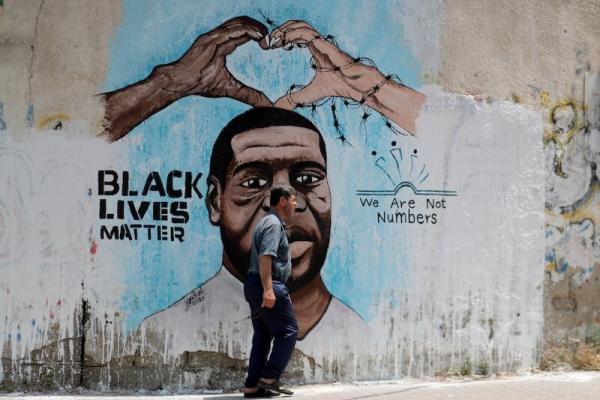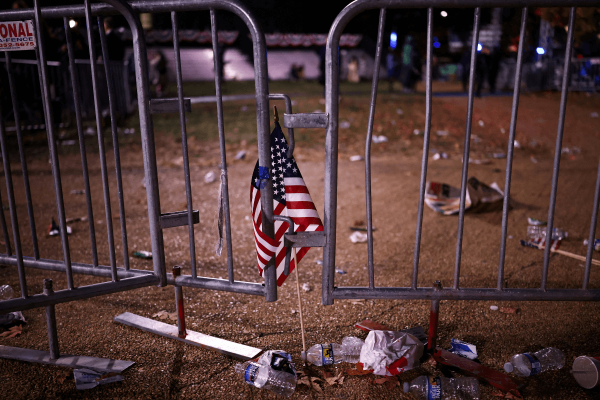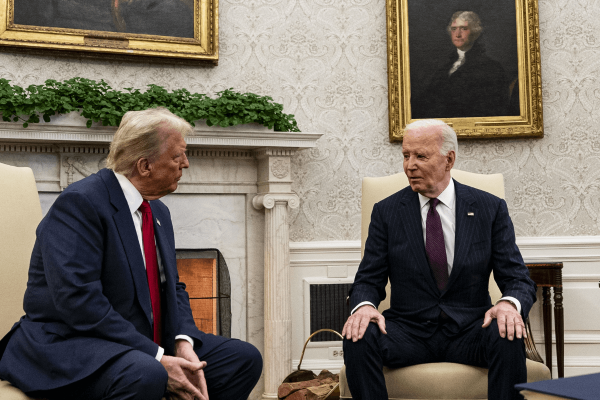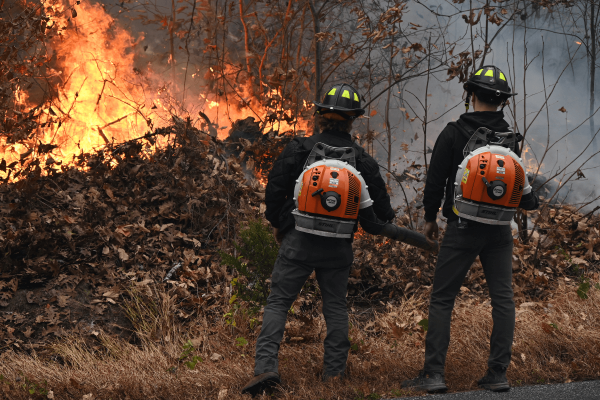I learned about the Promised Land in my church basement. My Sunday school teachers told the story of the ancient Israelites sojourning a treacherous wilderness, enduring the hardships of slavery, and crossing through a bloody red sea into a land overflowing with milk and honey. As I grew older and eventually became a minister, I began to appreciate that in the Black church, the Israelites’ journey toward the Promised Land, or “Zion,” is much more than a biblical story: It is a political commentary that speaks to the promise of liberation from the plight of oppression.
The story of Zion resonates with the history of African Americans. Blacks and Jews share common legacies of segregation, genocide, and racial domination. No wonder many enslaved Africans understood biblical Israel as a symbol of freedom from bondage. As historian Robin D.G. Kelley explains, the story of Exodus “provided Black people not only with a narrative of slavery, emancipation, and renewal, but with a language to critique America’s racist state.” Exodus was our political compass through the wilderness of slavery. Except we imagined ourselves as the Israelites, America as Egypt, and “Massa” as the Pharaoh whom freedom fighters like Nat Turner and Harriet “Moses” Tubman demanded, “Let my people go!”
But my view of Israel changed when I learned about Palestine in the streets of Ferguson, Mo.
In 2014, I traveled to Ferguson, a suburb of St. Louis, to join the protests against the police killing of 18-year-old Michael Brown. One night, a friend and I were standing near the burnt remains of what was formerly a QuikTrip when a voice yelled through a police bullhorn, “Go home or you will be tear-gassed!” Palestinian activists were using social media to teach many of us in the U.S. how milk soothes burning eyes. So we ran to buy several gallons at a gas station nearby. By the time we returned, it was too late. The milk we bought to use on other protesters we had to first use on ourselves.
A year after leaving Ferguson, I walked the stony roads of Jerusalem with a delegation organized by the Dream Defenders, a Black-led organization formed in the aftermath of Trayvon Martin’s brutal killing by George Zimmerman. My time in Palestine showed me that the Israel of the Bible is not the Israel of today. The ancient story of the flight from Egyptian bondage stands in stark contrast to what a growing number of legal scholars and rights groups recognize as Israeli apartheid. What began as a dream of Jewish liberation became a nightmare of Palestinian oppression.
In the heart of the Holy Land, I pressed my palms on the apartheid wall, which is part of a barrier that snakes through the West Bank for more than 400 miles. I stood with families amid the debris that once formed the walls of their living rooms. My stomach churned as our tour bus drove past an Israeli nightclub built atop a Palestinian cemetery, and, later, the construction site of a biblical-themed amusement park where residents were forced to demolish their own homes or be fined an estimated $6,000. Every day, I witnessed Palestinians experience harassment and humiliation at the hands of Israeli soldiers and trigger-happy settlers: mothers held up at military checkpoints, school children forced to travel on segregated roads, and families prevented from freely mourning their dead.
In Hebron, I encountered the audacity of settler violence. I remember the streets brimming with guns and garbage. A small but growing number of extremist Jewish settlers literally live on top of the Palestinian marketplace. I will never forget the savory smell of shawarma clashing with the stench of plastic bags filled with urine, feces, and trash — which some settlers dump onto merchants below. I met a father of three who had recently returned home after being imprisoned for three years by Israel’s occupying army. As his daughters played with a toy car beside the wall, I asked him what life is like now that he is out. “I left one prison and came back to another,” he said.
In Israel, the wall is just the outer layer of a carceral web. Practically every Palestinian in the West Bank has had a loved one incarcerated by Israel. Forty percent of Palestinian men are imprisoned at some point in their lives, children as young as 12-years-old are tried in military court. And, according to Military Court Watch, 95 percent of all military court cases end in conviction. Many Palestinians are held for months or even years without any charges being filed against them.
It is no coincidence that U.S. police and the Israeli military share “best practices” on how to suppress and surveil vulnerable populations. The same corporations that supplied police departments with the tear gas used against me and other Black Lives Matter protesters supplied Israeli soldiers with tear gas to quell Palestinian protesters.
The suffering of Black and Palestinian people is not the same. But our liberation is inseparable.
In 1843, minister and abolitionist Henry Highland Garnet declared in his An Address to the Slaves of the United States of America that “Pharaohs are on both sides of the blood-red waters.” Garnet was asserting the fact that racism afflicted American plantations and foreign territories. But his declaration can apply to American imperialism today. The U.S. government funds Israeli apartheid to the tune of more than $10 million a day. Our tax dollars — which could provide roughly 450,000 public housing units, l million children with free or low-cost health care, and 41,450 school teachers pay per year — are spent bombing kids, destroying homes, and uprooting olive trees to make way for settlements that violate international law, according to the U.N.
We may not drop the bombs, but the blood of those on whom they fall is on our hands.
As American-made missiles rain down on Gaza and Israeli-trained police rein in protests against Cop City in Atlanta, it is our moral responsibility to resist all “Pharaohs.” That means we must demand an immediate and permanent cease-fire, the entrance of humanitarian aid into Gaza, and an end to U.S. military funding to Israel. We must also address the root causes of violence that trace back to Israel’s 56 years of military occupation, 75 years of mass dispossession, and more than 100 years of a settler colonial war on the Palestinian people.
Thankfully, the tides are changing. The movement for justice in Palestine is making waves in the streets, on college campuses, and within the halls of Congress. Jewish organizations like IfNotNow and Jewish Voice for Peace are shutting down train stations and taking over national monuments. Students for Justice in Palestine are mobilizing their classmates to take action through campus rallies, speaker boycotts, and tuition strikes. Black activists are standing on the shoulders of Toni Morrison, James Baldwin, June Jordan, Malcolm X, Audre Lorde, and Muhammad Ali, all of whom championed the Palestinian cause. Clergy are hosting vigils, organizing pray-ins, and going on hunger strikes. And millions of people across the world are rising up from Chicago to Copenhagen, Seattle to Senegal, and Brooklyn to Brazil, chanting, “Free, free Palestine!”
The spirit of solidarity is in the air. I traveled to Palestine last July. A dozen of us — clergy, faith leaders, and people of conscience — went to forge relationships, learn about the situation on the ground, and build solidarity with the Palestinian people. Once again, my heart broke as I walked around East Jerusalem and witnessed Israeli military officers violently occupy the city where Roman rulers crucified the Prince of Peace. I wept as I witnessed a thuggish apartheid state attempt to break the will of Palestinians. And if I’m honest, despite my faith in things unseen, it was hard to imagine a truly Holy Land where all of God’s children live in peace and justice.
But my visit to the predominantly Palestinian village of Silwan made me see everything anew. Sprawled across the hillside of this ancient neighborhood is a stunning art installation featuring murals that depict the eyes of activists and martyrs from across the world. As I trekked the rocky hills, I gazed into the eyes of Ghassan Kanafani, Che Guevara, Rachel Corrie, Malcolm X, John Berger, and George Floyd as their eyes stared down at the Israeli occupation. I have never seen anything so devastatingly beautiful. And it was at that moment that it became clear to me: Palestine isn’t some colonial plaything; it’s a cradle of global solidarity where the fact of our interconnectedness is built into the landscape of daily life.
It’s been nearly 10 years since Ferguson exploded. And I have been reflecting on the meaning of that historic moment when Black youth turned the world upside down and sparked a global multi-racial, multi-faith movement for freedom and justice that ultimately led me to Palestine. If I have learned anything on my journey, it’s that the path toward a truly free Promised Land is not simply about where we go from here, it is about who we will become along the way.
Got something to say about what you're reading? We value your feedback!







